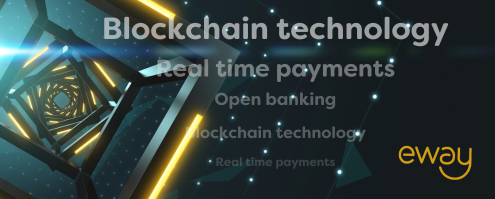Blockchain, real-time payments, and open banking are all fairly new technologies. They’re at the forefront of payments technology and are creating new opportunities for businesses to meet customer expectations.
Payments technology is forever innovating to meet consumers’ expectations for seamless payment experiences across multiple channels. Consumers are no longer limited to physical spaces. They now have easy access to digital and virtual worlds and they expect technology to keep up with their needs.
Blockchain technology in payments
Blockchain technology in payments provides a decentralised, public ledger system owned by no individual person or business. This means that anyone within a blockchain network can verify transactions or the ownership of an asset. Blockchain technology has broad applications across industries such as real estate, legal and payments.
Crypto currencies such as Bitcoin use blockchain technology to transparently record transactions. It’s particularly useful for executing smart contract agreements to automate trade, shipping and sensitive supply chain logistics.
Benefits of blockchain technology for payments include:
- Simplifying record-keeping and providing a public audit trail for multiple transactions.
- Speeding up payment processing with real-time verification of transactions.
- Allowing digital currencies to verify and maintain transactions.
- Enabling peer-to-peer (P2P) payments affordably across borders.
Research predicts the global blockchain market will have an annual growth rate of over 85% by 2030. This indicates the blockchain market will experience significant growth in the upcoming years. Blockchain is versatile, transparent and accessible. As it matures, innovations in payments will surely take advantage of these attributes.
Real time payments
Real-time payments are changing the way payments are made. This is improving the lives and operations of individuals, businesses and governments globally. Instead of processing transactions in batches at scheduled intervals, real-time payments process and settle in almost no time. The growth of real time payments is driven by a blend of new technology, regulatory pressure and customer expectations.
Governments are also aware of the need for real time payments. In February 2018, the New Payments Platform (NPP) launched to build an Australia-wide infrastructure for fast payments. The NPP was developed through industry and government collaboration. It will enable households, businesses and the government to make real time payments around the clock. PayTo is a NPP payments technology enabled by blockchain. It allows businesses to take pre-authorised real-time payments.
Demand for real time payments is rising. Payment providers are speeding up money movement. This has required industries and governments to collaborate to innovate their systems and processes.
The need for speedy payments is critical for some businesses. For many small businesses, cash reserves are shallower than those of their larger counterparts. In today’s challenging economic landscape, the speed at which a business gets paid can mean the difference between success and failure.
The shift to real time payments won’t happen overnight, nor will it be suitable for all transactions. Low-risk transactions will occur quickly. However, when there is potential for fraud, or a high-value transaction, slower payments are necessary. Large purchases, such as cars and homes, need extra attention to make sure the transaction is valid and funds are available.
Open banking
Open banking is an evolving technology that opens opportunities for financial innovation. Open banking is a form of real time payments. It allows third-party payment and financial services providers to access consumer transactions and payment history, provided the consumer agrees.
The Australian Government has developed rigorous Consumer Data Right (CDR) accreditation for banking service providers. This process is managed by the Australian Consumer Commission to allow consumers to choose how they share their banking data. PayTo uses the CDR consent model to authorise PayTo agreements.
Juniper Research predicts the open banking market will exceed $116 billion by 2026. This transformation is already changing how banks relate to their customers and creating new services.
Open banking innovations are evolving daily to provide better customer experiences. Eway is already exploring ways to bring this innovation to life. Using open banking, a company can display a customer’s bank account balances from all their banks on one screen. They can also transfer money between them, even if those banks are different. This eliminates the need for manual money transfers between banks and provides customers with greater visibility into their financial situation.
One example of how open banking is disrupting traditional financial services is the home loan market. Nano, a digital mortgage company, is using open banking technology to approve home loans. This is more efficient, quick, and inexpensive compared to the traditional approval process.
Blockchain, real-time payments and open banking will continue to make inroads into the payments space. Eway will continue to stay abreast of new technologies and make these available for fast integration when they land.
Want to learn how we can simplify commerce for your customers and boost your business profits? Contact us today!
This article is based on the Global Payments 2023 Commerce and Payment Trends Report. Eway is a Global Payments company.


Subscribe to updates
Get the latest news and payment insights from Eway hot off the press.



